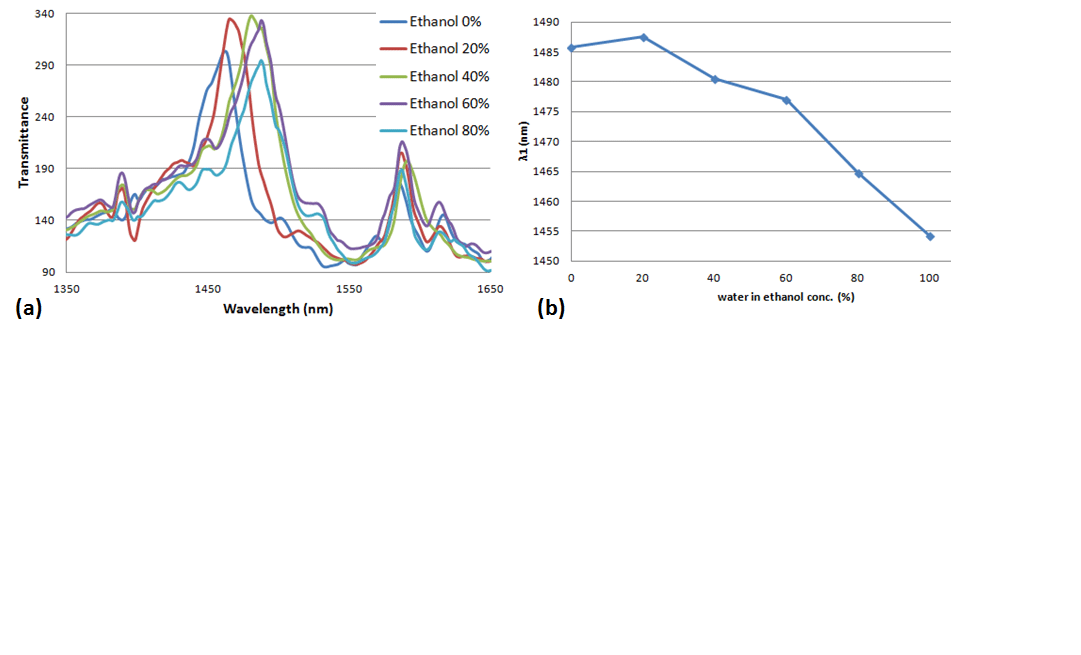
Extra-Ordinary Optical Transmission based Self-Referenced Sensor utilizing Nanosized Metallic Gratings
We have simulated and fabricated a nanometallic grating of Au for the detection of small amounts of water in ethanol, which is very crucial for its use in medical field. The sensor works on the principle of extra-ordinary optical transmission (EOT) [1]. The nanograting was designed to work as a self referenced sensor in the optical telecommunications NIR window of the electromagnetic spectrum. The performance of the nanograting was optimized numerically with respect to substrate, material, cover layer, adhesion layer, metal film thickness, cover layer thickness, groove width, grating pitch, angle of incidence, and fabrication tolerance etc. before it fabricated. Figure 1(a) presents the recorded transmission spectra while 1(b) represents the response curve of the sensor. In figure 1(a), it is observed that two peaks are observed in the transmission spectrum for any analyte medium on the cover of the nanograting. Moreover, with an increase in the refractive index of the analyte medium, the resonance peak at the smaller wavelengths (first resonance) shows a red shift, while the one at the higher wavelength (second resonance) remains fixed at that wavelength. The first resonance peak is attributed to the plasmons at the analyte-grating interface while the second one to the plasmons at the grating-substrate interface as was confirmed by Karabchevsky et.al. [2]. In figure 1(b), we have plotted the variation of the first resonance peak with the change in the concentration of water in ethanol. This behaviour is exactly the same as reported previously by a SPR sensor [3]. The increase in the resonance wavelength until 20 percent water in ethanol is because of the formation of ethanol-water clusters due to formation of hydrogen bonds which become homogeneous after this concentration, leading to decrease in resonance wavelength [3]. Thus, this chip can work as a self-referenced sensor. The present nanograting is further in the process of utilization for blood analytes detection.
References
[1]. Ebbesen, et.al. Nature 391, 667-669 (1998).
[2]. Karabchevsky et.al. J. Nanophoton. 5, 051821 (2011).
[3]. Srivastava et.al. Sens. Act. B 153, 194-198 (2011).
sachinchitransh@gmail.com

Powered by Eventact EMS